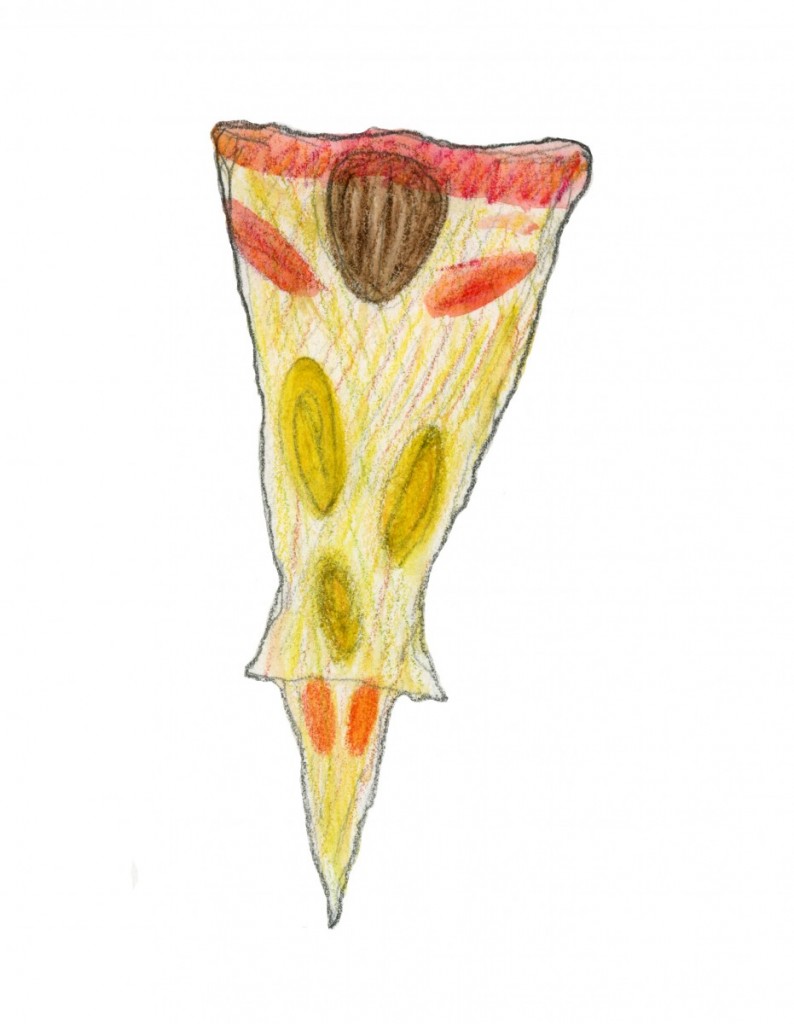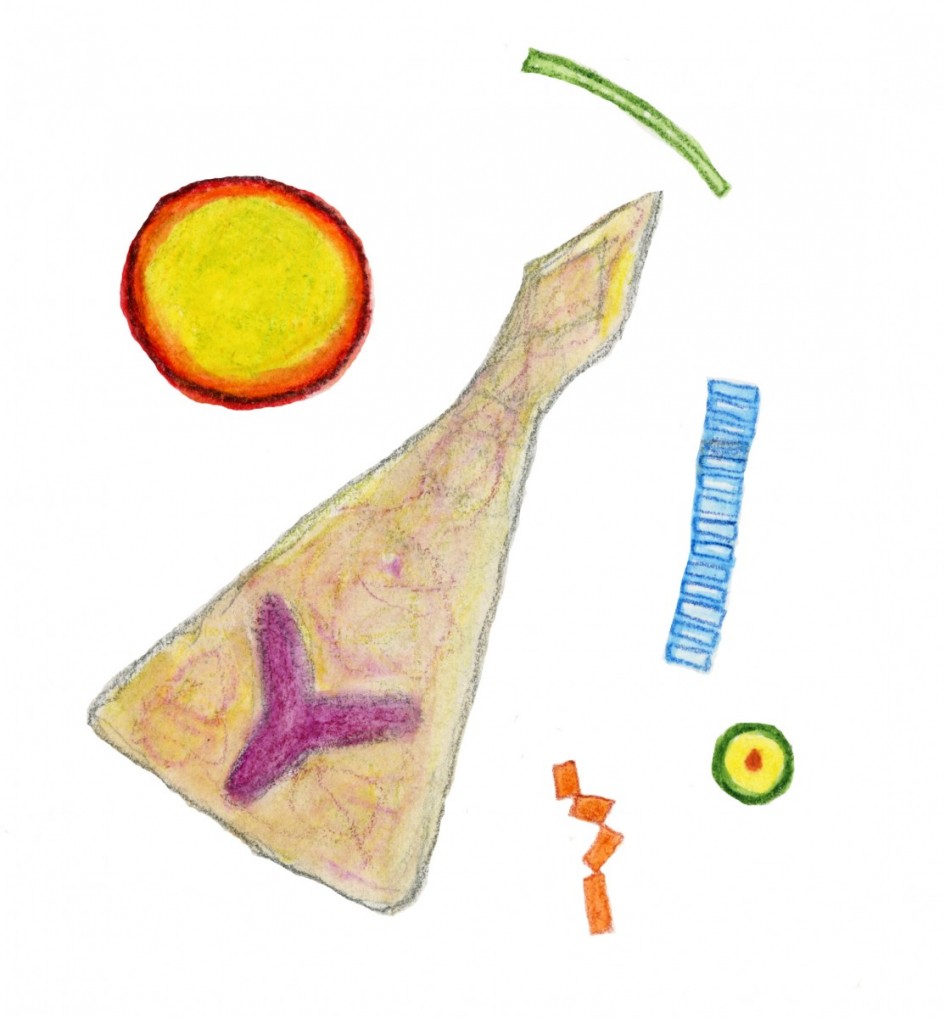
length – 250µm
Rotifer
Rotifers are microscopic organisms that are recognized as animals despite their size, which typically ranges from 200-500 micrometers in length in most species (Baqai et al., 2000). The Rotifera phylum consists of 3 classes: Monogononta, Bdelloidea, and Seisonidea. The rotifers drawn in this section were illustrated through personal observation and I do not have the expertise to classify them, so this piece will instead focus specifically on Brachionus plicatilis, a marine rotifer species within the Monogononta class.
Rotifers take many different shapes, and those within Brachionous look like ovals with one end cut off in a serrated fashion. They possess bilateral symmetry and are covered with a cuticle (Korea-US Aquaculture, n.d.). Their bodies arecomposed of a head, neck, main body, and a foot – which is used for mobility and which some species do not possess (Wright, 2014). Brachionous species can reproduce both sexually and asexually, with parthenogenic reproduction – embryo growth and development that takes place without fertilization – being the most common (Wright, 2014). Rotifers are an important part of the marine food web. They feed on smaller phytoplankton, decomposing organic materials, and unicellular algae (Baqai et al., 2000). Most species are planktonic, and therefore are vulnerable to predators who have more control over their movement and speed. Their lifespans are short, ranging anywhere from 6-45 days (Wright, 2014).
by Sarah Smith
Sources
Baqai, Aisha, Vivek Guruswamy, Janie Liu, and Gizem Rizki. “Rotifers: The Wheel “animalcules”” Introduction to the Rotifers. University of California – Museum of Paleontology, 1 May 2000. Web. 23 May 2016.
National Fisheries Research and Development Institute. “Utilization of Rotifer Brachionus Spp. as a Live Food Organism for Hatchery-based Seed Production.”Korea-Us Aquaculture. NOAA Central Library. Web. 23 May 2016.
Wright, Jeremy. “Rotifera.” Animal Diversity Web. Ed. Leila Siciliano Martina. University of Michigan – Museum of Zoology, 2014. Web. 23 May 2016.








